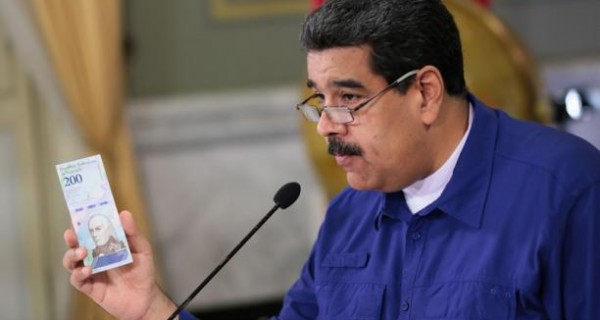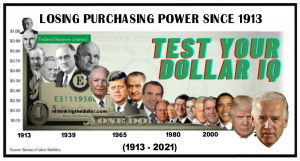If a Mexican goes to a butcher shop in his country with the highest denomination bill, the 1,000 pesos ($ 47.41), he can buy six kilos of steak, which costs an average of $ 7.94; While an Argentine, despite suffering the second highest inflation in Latin America, will be able to purchase, with the 1,000 peso bill ($ 12.88) two and a half kilos of meat, which has an average price of $ 5.15. In Venezuela, which has been going through a hyperinflationary crisis since 2017, the highest value bill, the 50,000 bolivar ($ 0.10), does not buy more than 27 grams or, what is the same, about three tablespoons of ground meat.
The banknote family, which largely alleviated the shortage of cash during the first months of its launch, became, in less than a year, dysfunctional, a term that, according to the Royal Spanish Academy, refers to “derangement in the functioning of something or in the function that corresponds to it. Well, the sovereign bolivar that Nicolás Maduro launched in August 2018 as an attempt to recover the pulverized value of the national currency, once again lost its three functions: to serve as a unit of account, a means of payment and a reserve of value.
“High figures are already being handled, not like those that were handled prior to the 2018 reconversion, but we have already reached millions of bolivars, which means that, at some point in the near future, the accounting systems will begin to fail again because they can handle so many figures, “says financial analyst Henkel García, director of Econometrica. “On the other hand, the lack of cash is not necessarily due to the fact that it has not been converted. If the government had taken out enough 100,000 bills, or even 500,000 bolivars, there would be no shortage of cash at least for the moment.
Just two years after the monetary reconversion proudly announced on television and radio, and promoted on dozens of billboards throughout the country that the rain has been in charge of erasing, the administration of Nicolás Maduro plans to issue a new 100,000 bolivar bill . With this money a worker cannot even have coffee in a bakery in the morning. You would need seven or eight tickets to pay the 700,000 and 800,000 bolivars that it costs in establishments in Greater Caracas.
Despite the fact that the bolivar is clearly digging its own grave before the important advance of dollarization – in the country there will be three ATMs that will dispense dollars to AKB Fintech clients – the Maduro government does not want to give up the national currency and officially dollarize the economy, which is what public workers and sectors of the opposition have asked for.
 The same Central Bank of Venezuela (BCV), subject to orders from Maduro, recognizes that the bills dramatically lost value. According to the statistics of the issuing entity, since February 2020 not a piece of the denominations 2, 5, 10, 20, 50, 100, 200 and 500 bolivars has been put into circulation.
The same Central Bank of Venezuela (BCV), subject to orders from Maduro, recognizes that the bills dramatically lost value. According to the statistics of the issuing entity, since February 2020 not a piece of the denominations 2, 5, 10, 20, 50, 100, 200 and 500 bolivars has been put into circulation.
Currently banknotes represent only 3% of total monetary liquidity, which is the total cash and total deposits in the Central Bank of Venezuela Central Bank of Venezuela .
From January to September, the Central Bank issued 33.5 million new pieces of the 10,000 bolivar note, 57.6 million pieces of the 20,000 bolivar note, and 64 million pieces of the 50,000 bolivar note, to try to respond to the increase in the demand for cash due to hyperinflation, which in that period registered an accumulated rate of 844.1%, according to BCV calculations.
Notes from 2 to 500 bolivars represent 94.1% of the total paper money in circulation, while those of 10,000, 20,000 and 50,000 bolivars represent only 5.8% of the total number of pieces of the current monetary cone in circulation.
“When you have a million bolivars in a bank account and you go to the bank to withdraw it, there is no cash because hyperinflation pulverized the monetary cone,” says economist Jesús Casique, director of Capital Market Finance. «Already the rate of increase of banknotes is extremely slow. If the problem of hyperinflation is not solved, it makes no sense to take out a 100,000 bolivar bill, which is equivalent to, or to establish a monetary reconversion, in addition to being unfeasible because it has a high cost and Venezuela has no cash for that.
The expert proposes to inject a greater number of pieces to the market of the three banknotes with the highest denomination. He also suggests that zeros could be added to the 10,000, 20,000 and 50,000 bills to solve the problem in the short term. But Casique argues that the most important thing is to establish fiscal and monetary discipline and to respect article 320 of the Constitution, “repeatedly violated by the Central Bank by monetizing the fiscal deficit, one of the main factors that generated hyperinflation, in addition to the depreciation of the exchange rate ”.
It points out that, according to the BCV’s Consumer Price Index, since the reconversion entered until September, which was the last report, inflation is 3,007,112%.
Their peers in the region
In Argentina, a person can buy with the 1,000 Argentine peso bill, 2.5 kilos of steak or six packages of precooked corn flour. You could also pay for a breakfast for two with scrambled eggs, toast and coffee in an exclusive area. With that amount you can also buy four inexpensive bottles of wine or a more expensive one in liquor stores, or drink between six and eight bottles of beer in a sophisticated bar.
In Chile, with the 20,000 pesos ($ 25) of the highest value ticket, a person can pay for a simple dinner or they can make two if they go to a fast food place. Or, a Chilean can buy a couple of movie tickets.
In Mexico, the highest value bill, which is 1,000 pesos ($ 47.41), is enough to make a small market (without red meat or fish). With it you can also buy clothes in national brand stores: at least three shirts and an office dress or three shirts and pants. With the 1,000 pesos you can also fill the gas tank of a vehicle, such as a Chevrolet Aveo or a Nissan March. It is enough for two people to go out for recreation, like going to the cinema with a popcorn promotion and enough to pay for parking. It can vary, of course, depending on where it is consumed.
In Venezuela, with the 50,000 bolivar bill you can barely put 10 liters of gasoline in subsidized service stations, where they sell the liter at 5,000 bolivars.
Article appeared on TalCaul
Read more like this…
-
Jobless Americans Face Debt Crunch Without More Stimulus As Debts Are Due
-
Silver Could Explode Within Weeks
-
Flying Blind: Clueless about Risk, We’re Speeding Toward Systemic Failure
-
The US Is Running Out of These 9 Foods FAST: Food Shortages From Theoretical To Real










0 Comments